How To Do Effective Competitive Analysis For Dropshipping
Establishing a dropshipping business is exciting, but you'll need a robust marketing strategy and effective product research tools to stay profitable. Competitor analysis is a strategy for gathering crucial data about other businesses operating in the same market. It involves gathering information about major competitors to gain insights into their offerings, sales, and marketing strategies, which can be used to put one’s own business in a better position and make better business decisions. A well-executed competitive analysis can help you learn how your competition works and identify potential opportunities where your business can outperform your competitors.

There’s no one way to do a competitive analysis. To perform a good competitive analysis, you need to do proper planning. Each step requires thoughtful consideration. You may need to define objectives, set clear expectations, and establish a framework for performing a systematic, thorough, and impactful competitive analysis.
In this blog, you’ll learn the importance of conducting a competitive analysis for your business and key areas to research. We’ll also provide you with a list of dropship competitor analysis tools that can help you gather crucial information effectively.
Why is competitor analysis important for dropshippers?
Dropshipping, a low-risk business model, is growing in popularity and becoming a lucrative business opportunity for those keen on bootstrapping a new venture. The growing popularity of the dropshipping model means that there may be many online retailers selling the same or almost similar products as you are. Success depends on how you strategically differentiate yourself amidst this competitive landscape. The only way to solidify your stance and gain traction and sales when dropshipping is by standing out from your competition. So, as a dropshipper, standing out or outperforming your competitors should be your primary objective.
Dropshippers can get ahead of the competition by performing competitor research. A well-executed competitive analysis unveils market trends, helps gauge product popularity, identifies niches, and informs strategic decisions, especially when armed with product research tools.
If done correctly, a competitive analysis can help you extract meaningful data to back your own business decisions. Good competitive analysis can help you:
-
Develop or validate your Unique Value Proposition (USP)
-
Understand your market and identify upcoming trends
-
Know about your competitors’ strengths and weaknesses and their business strategy
-
Discover untapped opportunities to outperform your competitors
-
Improve your products or offerings
-
Create a strategic plan for your business
-
Reach customers who are being underserved
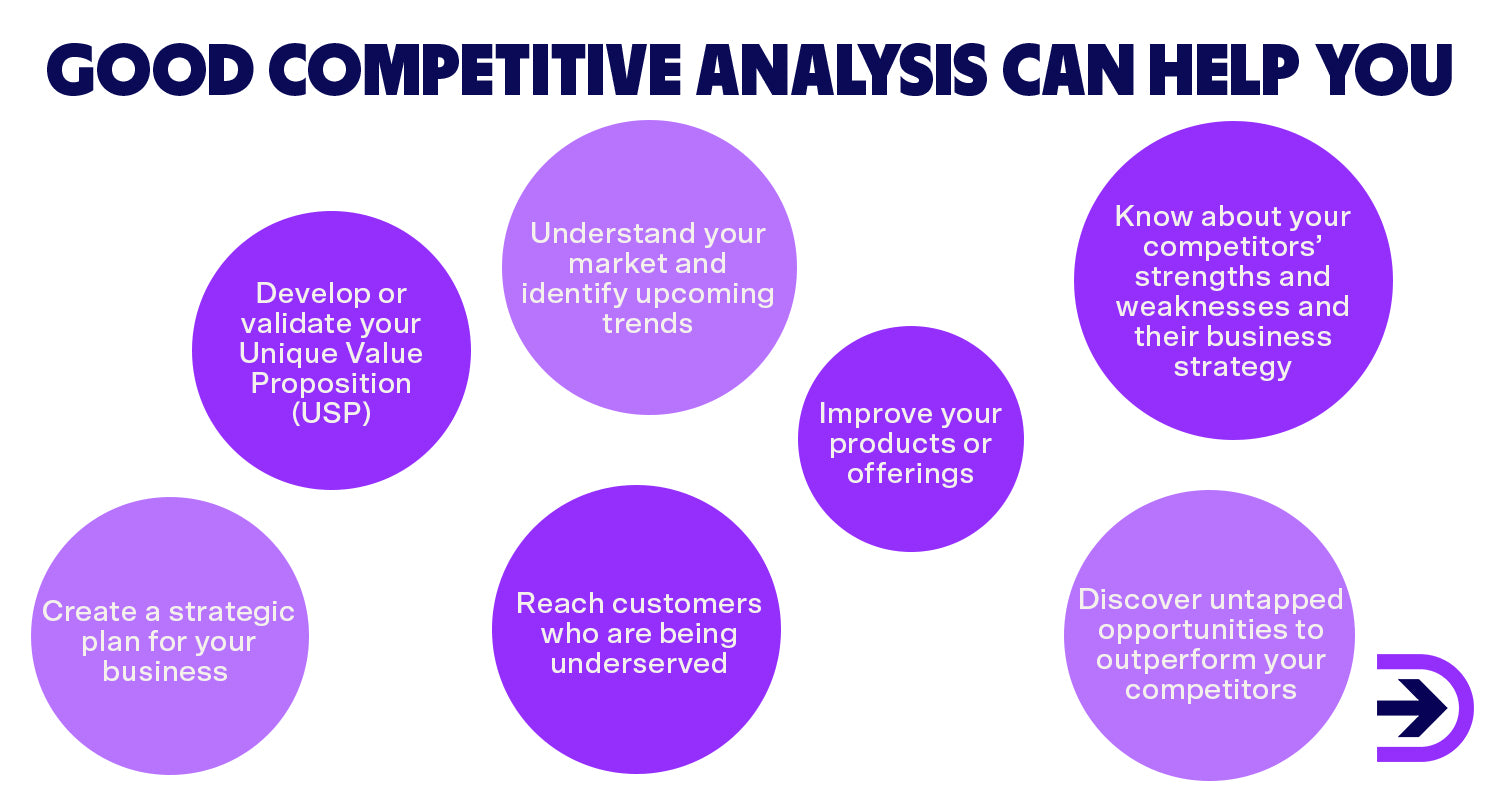
But before you start analysing your competitors, you’ll have to identify them first. Be sure to identify both direct and indirect competitors. This way, you get a clearer picture of who’s competing for your customers. The more you know about your competitors, the better your chances of growth become. Competitor analysis tools play a pivotal role in understanding the market landscape. They can help you carve out a competitive advantage.
To start with, make a list of your competitors - include their business name and website URL. If you know your industry well, you may be able to do it easily. If not, it’s worth doing keyword research. You may also wonder if you should focus on long-tail keywords or short-tail keywords. Short-tail keywords are usually phrases that contain 1-3 words. But the challenge is that they are difficult to rank for. Long-tail keywords are usually 4 words or longer. They might not generate a high volume of users as short-tail keywords, but the conversion opportunities are better. Another way to do keyword research is to run a Google search on a keyword and see what turns up in organic and paid ads.
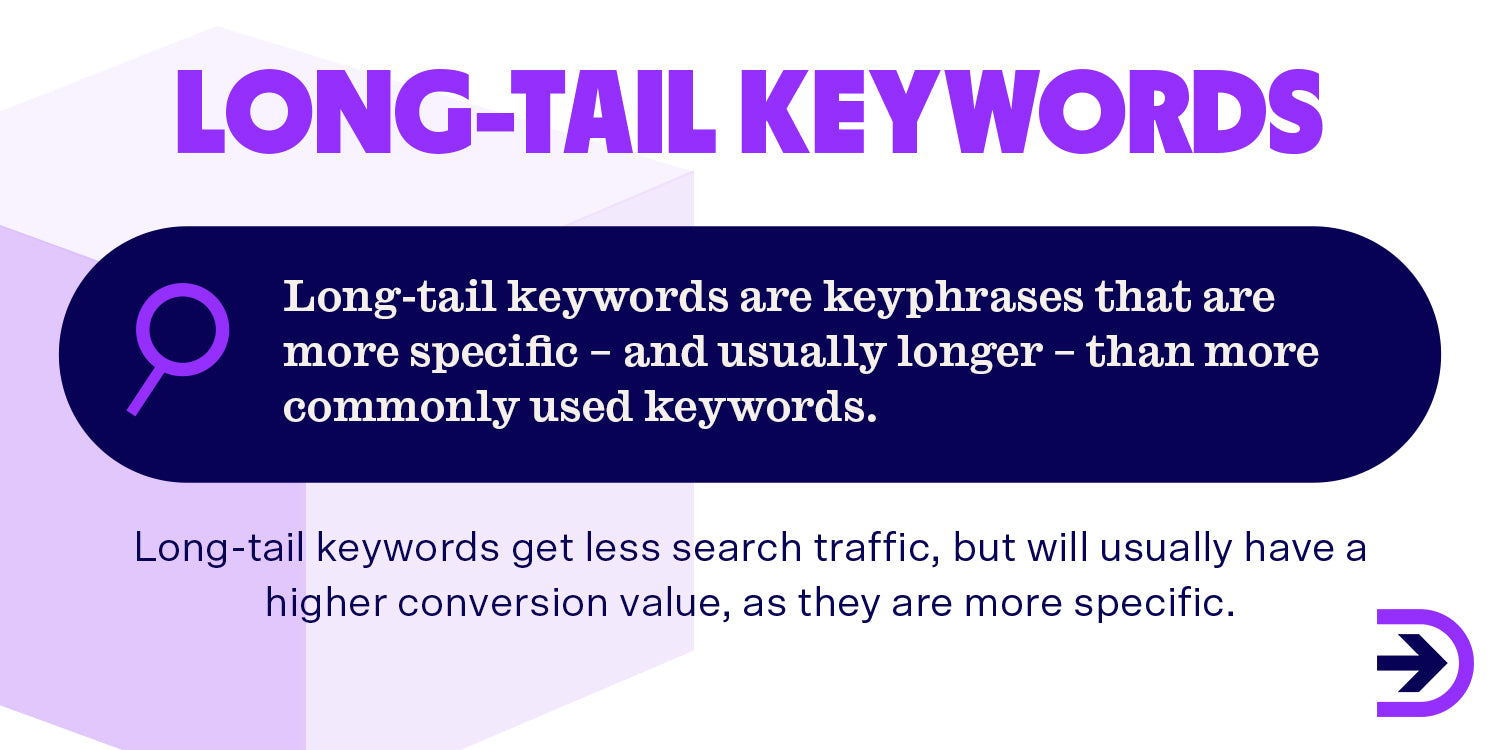
Once you’ve identified your competitors, the next step is to analyse their business and strategy.
Key information to research
How to do competitor analysis will depend on what you’re trying to learn about your competitors. You might want to run a competitor analysis on a specific area of your competitor’s online store, such as their social media account, website, or product offerings or do a complete analysis. Competitive market analysis requires you to analyse your competitors’ four P’s of marketing: product, price, promotion, and place. Ideally, the goal should be to gather information, analyse the data, evaluate sales trends, identify shortcomings and gaps, and use it to design a strategy for your business. Now, we’ll delve into the key areas to research when performing competitor analysis.

Product trends and demand
Competitive analysis isn’t just about understanding your competitors. You can also discover the direction that an entire industry is moving towards. When delving into product research, you may use dropshipping product research tools to streamline the dropshipping product research process. It can help you find successful products, discover competitor strategies, understand emerging product trends and demand, and identify the latest developments and shifts in consumer preferences within your industry. You'll also understand what products are gaining traction and anticipate future demand, which can help you align your offerings, stay relevant and meet customer expectations.
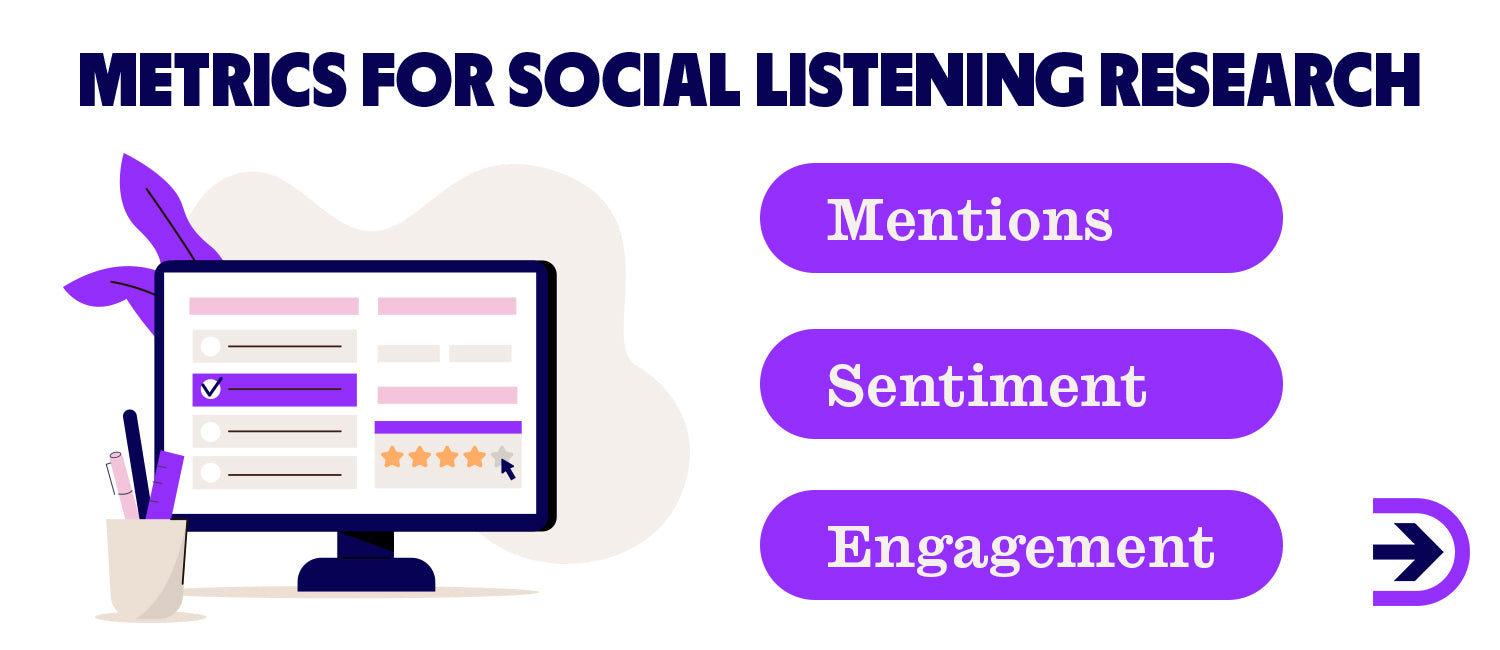
Monitoring customer feedback, studying industry reports, and reviewing social media discussions can provide crucial insights into product trends and demand. Businesses can use Social listening tools to stay attuned to conversations on social media platforms and gain valuable insights into customer sentiments, preferences, and trends surrounding their brand and the products they’re willing to offer.
Websites and apps
Researching your competitors’ websites and apps they use is not just about keeping tabs on the competition but about learning from their successes and shortcomings. It empowers dropshippers to run a profitable business and adopt technologies to improve user experience and help them stand out.
When researching competitor online stores, you could start by analysing their online presence, user experience, design, and functionality. It can provide valuable insights into their digital strategy, which you can use to improve your website. A competitor website audit may also include:
-
Analyse their website layout, user-friendliness, and mobile responsiveness.
-
Assess content quality by gauging its accuracy and relevance to the target audience. BuzzSumo and Answer The Public are some of the content analysis tools that can help you identify your competitors’ content strategies.
-
Identify what methods your competitors use to collect leads. For example, pop-up notifications, signup forms, or lead magnets.
-
Analyse how your competitors use social networking symbols and widgets on their websites.
-
Assess how much organic and sponsored traffic your competitor’s website gets, including their use of CTAs, landing pages, and forms. SimilarWeb is a popular traffic estimation tool that allows you to get an overview of website traffic, search traffic and specific keywords, social media and referrals, display advertising, and similar sites and apps.
-
Analyse how your competitors use keywords, meta descriptions, headings, domain authority, URL structures, link-building strategies, and other on-page and off-page SEO tactics. Semrush and Ahrefs are powerful research tools for running a keyword competitor analysis and understanding search volume.
-
Examine the apps and other features used by competitors to know which tools and technologies enhance user engagement, streamline processes, or offer other unique functionalities to improve their site performance.
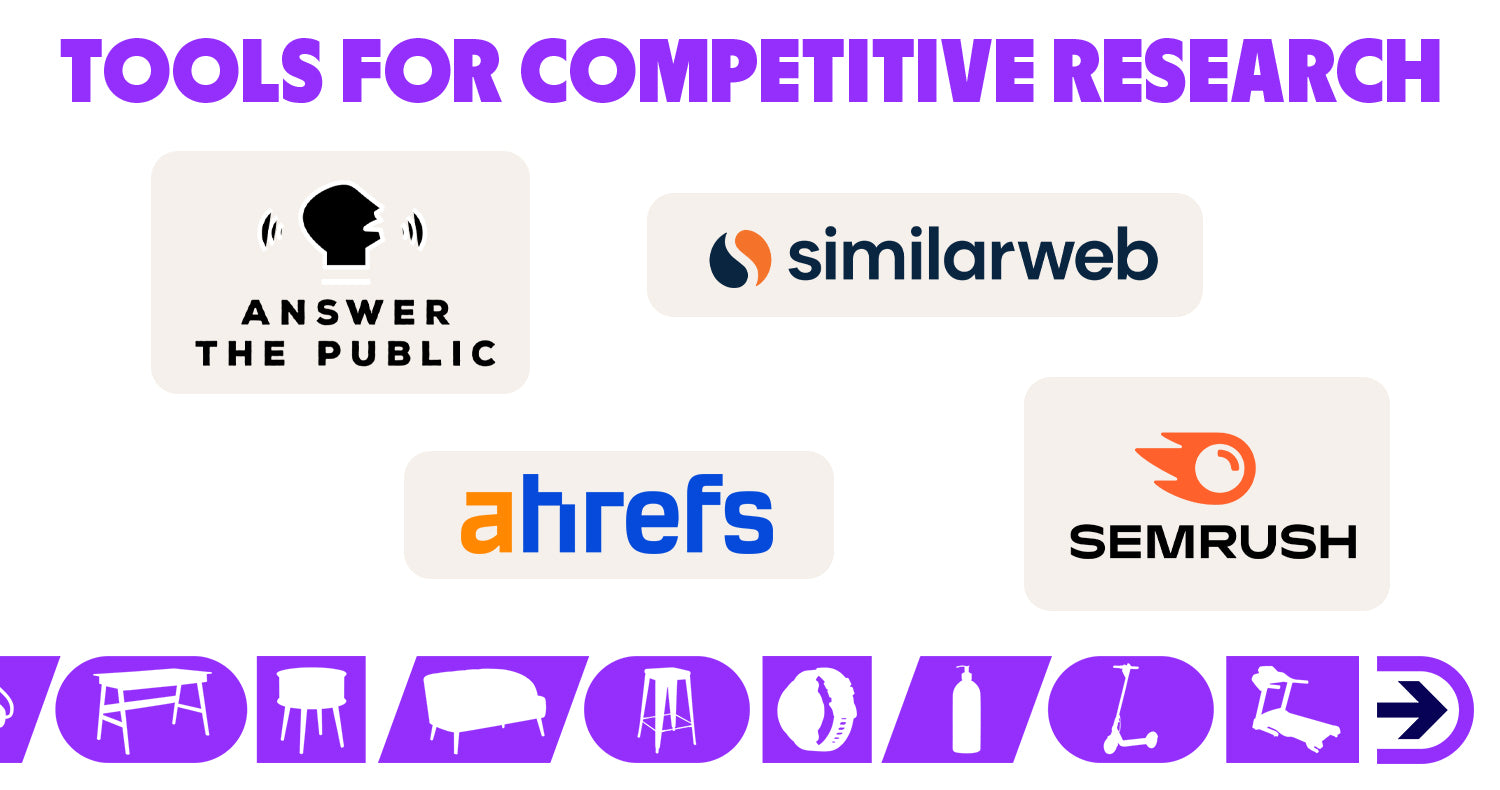
Competitive website analysis can provide helpful information about your competitors, which you can use to refine your strategy and marketing approach. Schedule regular analysis to stay informed and relevant in this ever-evolving landscape.
Ads and marketing
If you’re stuck trying to figure out and plan your advertising and marketing strategy, you may consider exploring your competitors' advertising and marketing strategies. It could include understanding their online and social ads and content marketing strategies, identifying various platforms they prioritise and the frequency of their campaigns, and assessing the tone of their messaging. A competitive analysis can help you identify what works in your market. Semrush has some free tools that can help with your competitor research. You can create a free account with Semrush.
There are four focus areas that you may consider when analysing your competitors’ ads and marketing strategies.
Assess your competitors’ paid search campaigns
Assessing your competitors' paid search campaigns lets you know their target keywords, how many sales have been made, and the messaging and offers they use to attract customers. You'll also know their sales data and budget allocation and bidding strategies, which can help you strategise your budget and spend money effectively for your own dropshipping business. You can also identify any special offers, promotions, or unique selling points they highlight to promote their products, which can help you develop a strategy to differentiate your offerings. Additionally, by understanding where your competitors’ ads appear on search engine results pages (SERPs) and their ad positioning, you may be able to position your ads strategically.
Analyse your competitors’ Google ads
You may consider analysing your competitors' Google ads, as it may provide valuable insights into their advertising strategies on Google, target keywords they use to rank and show up in SERPs, and messaging to attract consumers. Look at their headlines, descriptions, and ranking keywords to understand their positioning. This data helps you identify competitive advantages, refine and craft irresistible ad campaigns and drive marketing efforts to stand out.
Analyse your competitors’ display and social ads
Analysing your competitors’ display and social ads helps identify the best-performing display, video, and social ads. You can also understand their marketing strategies, messaging, and audience targeting, which can help you refine your own marketing strategies, identify opportunities to outperform, and stay informed about the latest market trends. It can overall improve the effectiveness of the campaigns.
Look into your competitors’ use of Google shopping
You may also consider looking at your competitors' use of Google shopping. It unveils your competitors’ pricing strategies and other performance metrics. This information is valuable for adjusting your pricing to remain competitive. It also sheds light on what products your competitors prioritise for paid search. Analysing your competitors' use of Google shopping is crucial for your business. It can equip you with actionable intelligence to enhance your product visibility, pricing strategies, and marketing effectiveness.
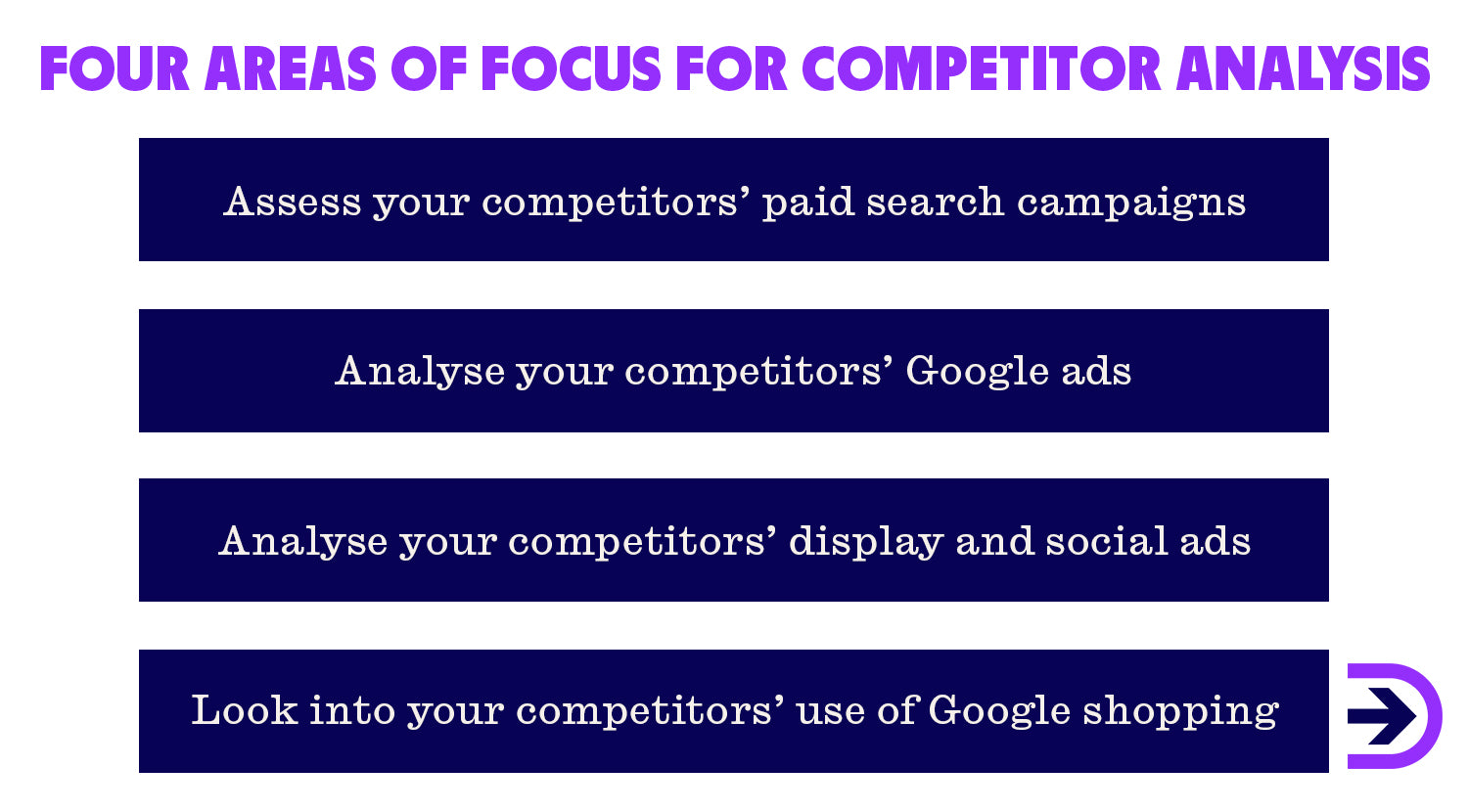
Estimated product revenue
Evaluating your competitors’ estimated product revenue is crucial, as it helps understand which products contribute to their revenue, the number of units sold, and consumer preferences. You may use product research tools to assess emerging trends, product popularity and profitability in a specific niche. By identifying trending products, you can prioritise your offerings and adjust product pricing to stay competitive and improve profitability. It empowers you to make data-driven decisions and maintain a competitive edge in the market. Additionally, analysing your competitors’ estimated product revenue equips you to strategically position your products in the market and create impactful messaging that can attract consumers and outperform your competitors.
6 Competitor analysis tools for dropshippers
Competitor analysis tools can greatly help in scaling your dropshipping business. They can help identify high-performing dropshipping products, provide best-selling product ideas, and other tools your competitors use. You may even gain access to their product database.
We’ve compiled some of the best competitor analysis tools to help you identify the strongest players in your market and find opportunities to outperform.
SpyFu
SpyFu lets you spy on your competitors to find valuable insights into their business and marketing strategies. It uses web scraping technology to gather data. SpyFu is a great tool for keyword, domain, and backlink analysis and to improve online search performance through keyword research and competitive intelligence. You can use this tool for various purposes, such as keyword research, finding winning dropshipping products, competitive analysis, SEO analysis, finding backlinks, and reporting and tracking. However, its sole purpose is to find the most compelling keywords used by your competitors.
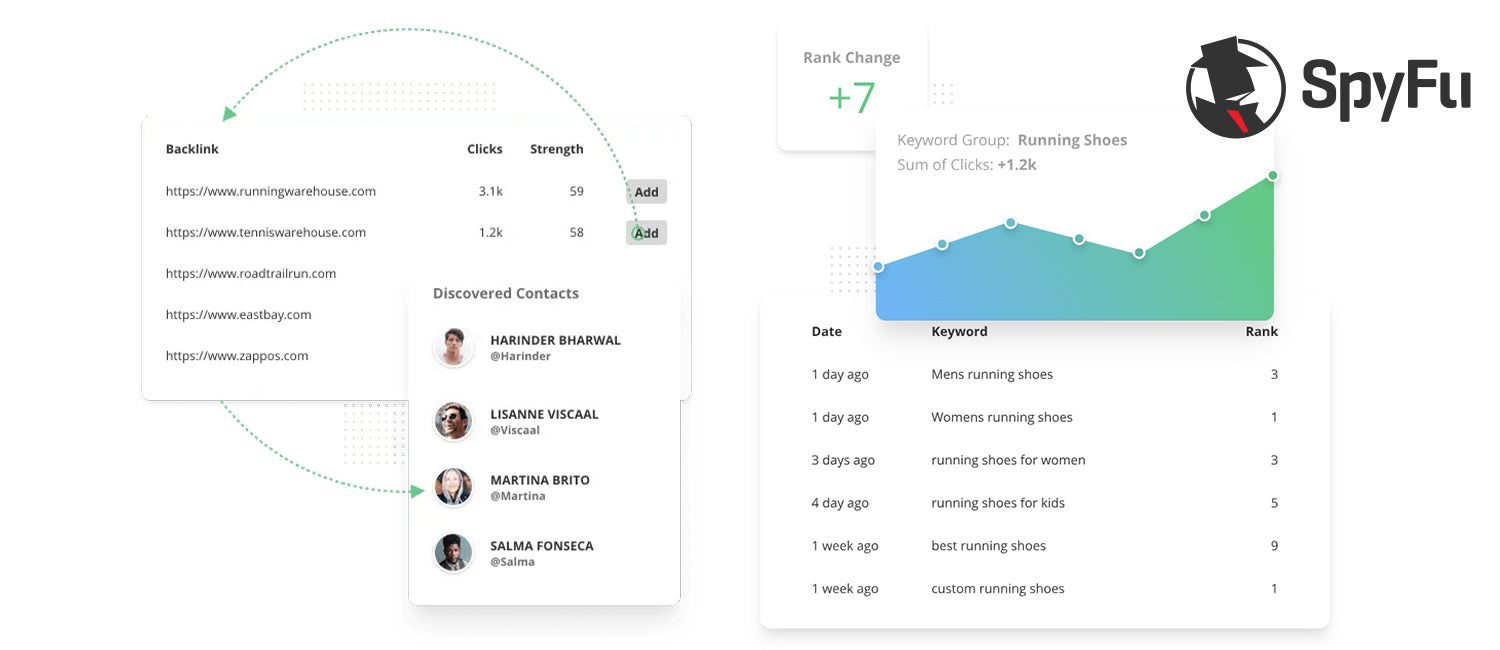
Key features of SpyFu:
-
SEO research: SpyFu takes the guesswork out of SEO by getting instant access to backlink strategies, ranking history, and top pages. It keeps you up-to-date with keyword tracking and custom reports.
-
PPC research: SpyFu uncovers your Google Ads competitors’ keywords and ads with its suite of PPC tools. It provides buy recommendations and negative match suggestions for any domain.
-
Competitive analysis: SpyFu provides crucial information about your competitors’ business. It uncovers top SEO and PPC strategies, helps with traffic analysis, and identifies new market players. It also helps find backlinks’ sources and competitors’ top-ranking keywords.
-
Reporting: This feature stores all your SEO data in one place. It helps you keep track of the progress you’ve made with your SEO efforts. The reports break down all the information to make it easy to understand. There are reports designed for different stages of the sales cycle, which include pre-sales, onboarding, planning, retention, and upselling. You can even create custom reports.
-
Projects: You can create unlimited projects to organise keywords and keyword groups. Additionally, you can set up alerts to stay up-to-date on changes.
Pros of SpyFu:
-
Offers free version with limited features
-
Huge selection of tools
-
Provides detailed analysis of your competitors
-
Ideal for both SEO and PPC
-
Affordable pricing
-
User-friendly layout
-
Ideal for competitive analysis
Cons of SpyFu:
-
No site audit feature available
-
Does not allow you to audit your backlinks
-
Ad metrics can be complicated for novice SEO users

BuzzSumo
BuzzSumo remains one of the most effective tools to support content marketing efforts. It’s ideal for content research and helps businesses identify the most shared content and analyse its performance.
With BuzzSumo, you can discover what topics are trending, identify best-selling products, find popular influencers for social media marketing, and identify your competitors’ content strategies. It has a vast database of content that offers endless inspiration for new content, and with the insights drawn from its expansive database, you can shape and sharpen your content strategy.
You could use it with a keyword research tool such as Semrush for better results. Conduct keyword research and pick a keyword to focus on. Then, enter the keyword into BuzzSumo, and you’ll immediately get a list of the articles that perform well and generate the most engagement for that keyword. These articles can then be used as an inspiration for your content outlines. Additionally, its daily and real-time alerts are a great way to stay on top of long-tail keywords. BuzzSumo doesn't provide a free account but offers a 30-day free trial.
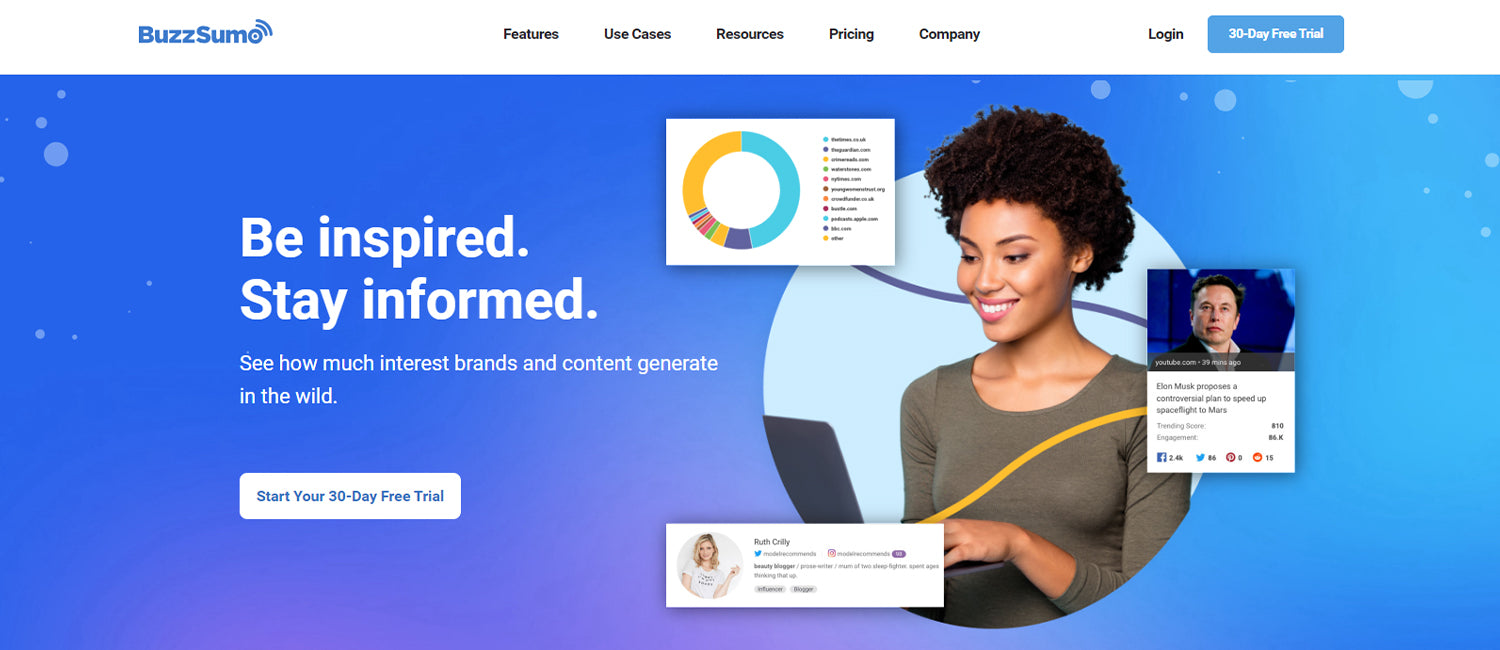
Key features of BuzzSumo:
-
Content discovery: Get evergreen and trending content ideas and distribution tips by browsing topics, trends, and forums, backed by SEO insights and real questions that crop up on forums. BuzzSumo also shows you what’s trending and what’s not.
-
Content research: BuzzSumo is one of the best content research tools. It scans billions of articles and social media posts to provide you with meaningful insights. Browse around 5 billion articles, identify top content formats, compare trends by scanning the past 5 years of content performance data, and search by domain to uncover your competitor’s top content.
-
Find popular influencers: Identify influencers and content creators with engaged audiences and genuine authority on Instagram, Twitter, and the web to promote your brand.
-
Monitoring: Track mentions, trends, and updates. BuzzSumo lets you monitor your competitors, brand mentions, and industry updates. You can see what people say about your current and emerging products in your category. You also receive alerts about important events, so you stay up-to-date.
-
Chrome extension: You can research content on the go with its latest Chrome extension. BuzzSumo’s Chrome extension lets you tap into the world from your browser. You can build links, analyse social media engagement, and monitor 40+ marketing metrics.
-
BuzzSumo API: Integrate, automate, build, and develop with BuzzSumo’s powerful APIs.
Pros of BuzzSumo:
-
User-friendly tool
-
Excellent ideas generation tool for researching and planning content
-
Makes social media influencer outreach work easier
-
Identify the most shared content and analyse its performance
-
Huge database of content
-
Great solution for a business of any size
Cons of BuzzSumo:
-
Not much data about audiences
-
Advanced searching is a bit complicated
-
Customer support may be lacking
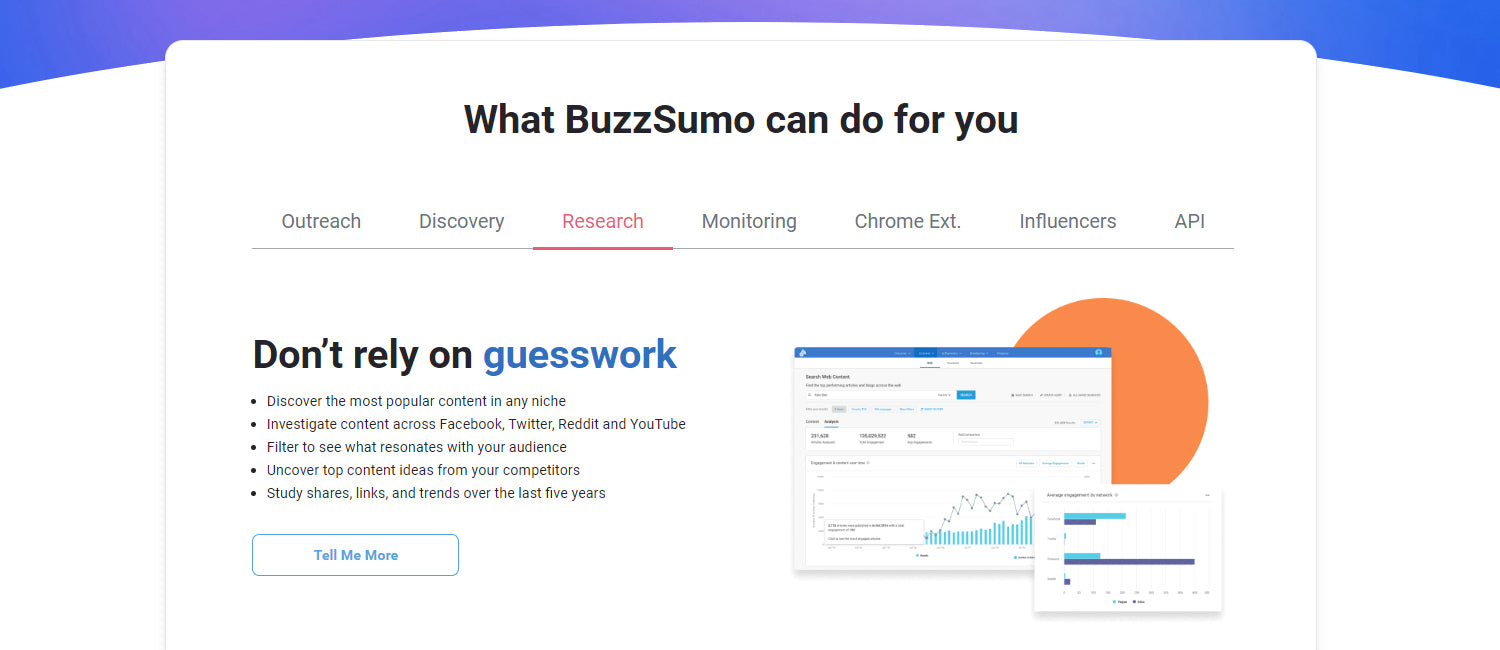
Sprout Social
Sprout Social is one of the best tools to understand competitor performance on social media. It also helps you handle content creation, publishing, listening, scheduling, managing inbox, reporting, analytics, and internal collaboration all from one place. You can even track incoming message volume, add content labels, personalise using automation, post at the best times, and use custom keywords to understand how people perceive you as a brand.
Sprout Social also has a mobile app that enables you to manage your social media activities from anywhere at any time. This tool supports Instagram business accounts, Twitter, Facebook pages, Pinterest, YouTube, and LinkedIn. You can connect accounts from Google My Business, Google Analytics, Tripadvisor, and Glassdoor. Sprout Social doesn't offer a completely free version, but you can try it for free with a 30-day trial.
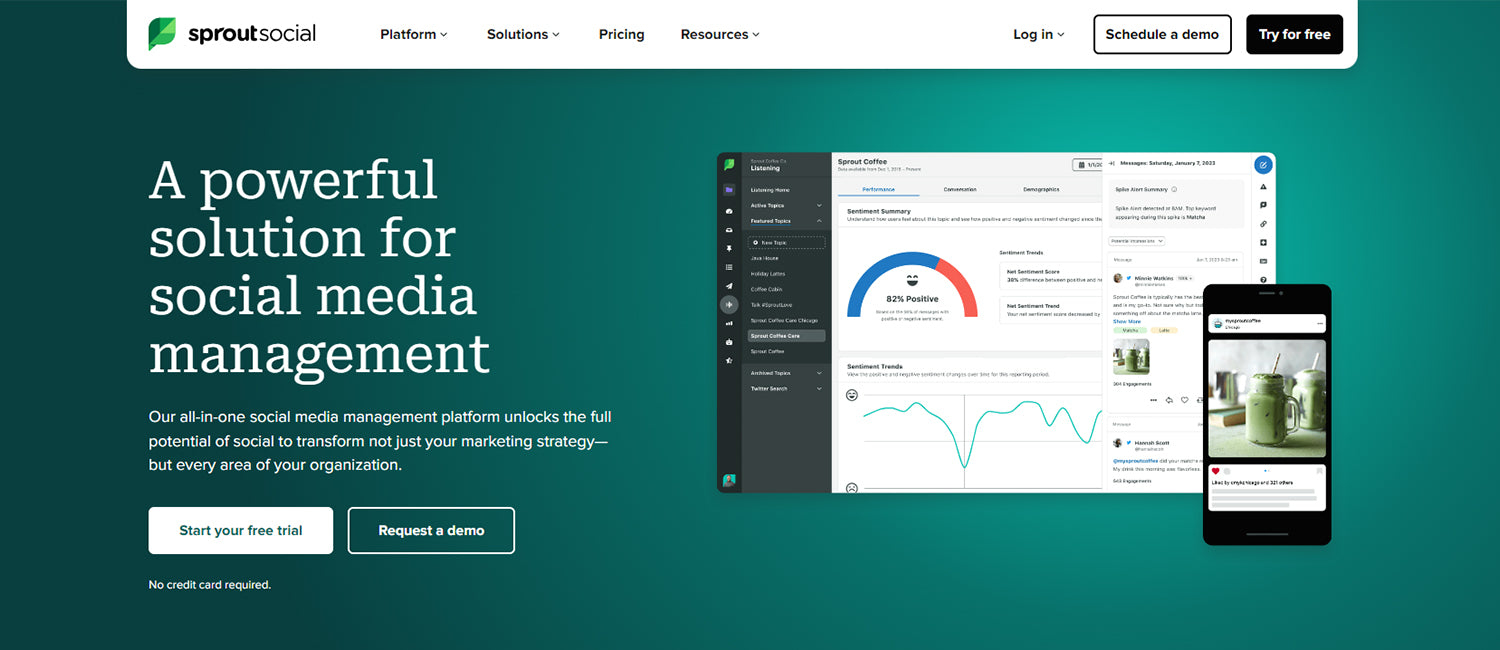
Key features of Sprout Social:
-
Social media publishing: Sprout Social offers an extensive range of social media publishing tools that enable businesses to manage content effectively.
-
Social media listening: With Sprout Social listening capabilities, you'll know what people think and where these conversations are happening. You can leverage this data for future marketing strategies and to scale your dropshipping store.
-
Smart Inbox: Sprout Social enables you to collectively view all the messages sent by your audiences across all connected social accounts. You can even choose how you want to visualise your inbox by applying filters such as sources (social profiles), message types (retweets, mentions, comments), and tags.
-
Automation and Chatbot: Sprout Social offers advanced automation features that can help optimise your internal collaboration and social interactions. You can also set up a chatbot to respond and engage with your audience via Twitter and Facebook private messages.
-
Reporting and analytics: Sprout Social offers insightful reports and data to help you make data-backed decisions.
-
Team collaboration: Sprout Social has a dedicated set of tools for internal team collaboration. You can add people to your account and assign actions to incoming messages to improve productivity.
Pros of Sprout Social:
-
Multiple integrations for different categories
-
Excellent customer support to its users
-
Streamlined inbox to manage all your social conversions
-
User-friendly interface
-
Powerful automation features
-
Group social channels and team members for effective collaboration
-
Automated link tracking
-
Excellent publishing tools
Cons of Sprout Social:
-
Social listening available for premium plans only
-
Trend analysis available only for Twitter
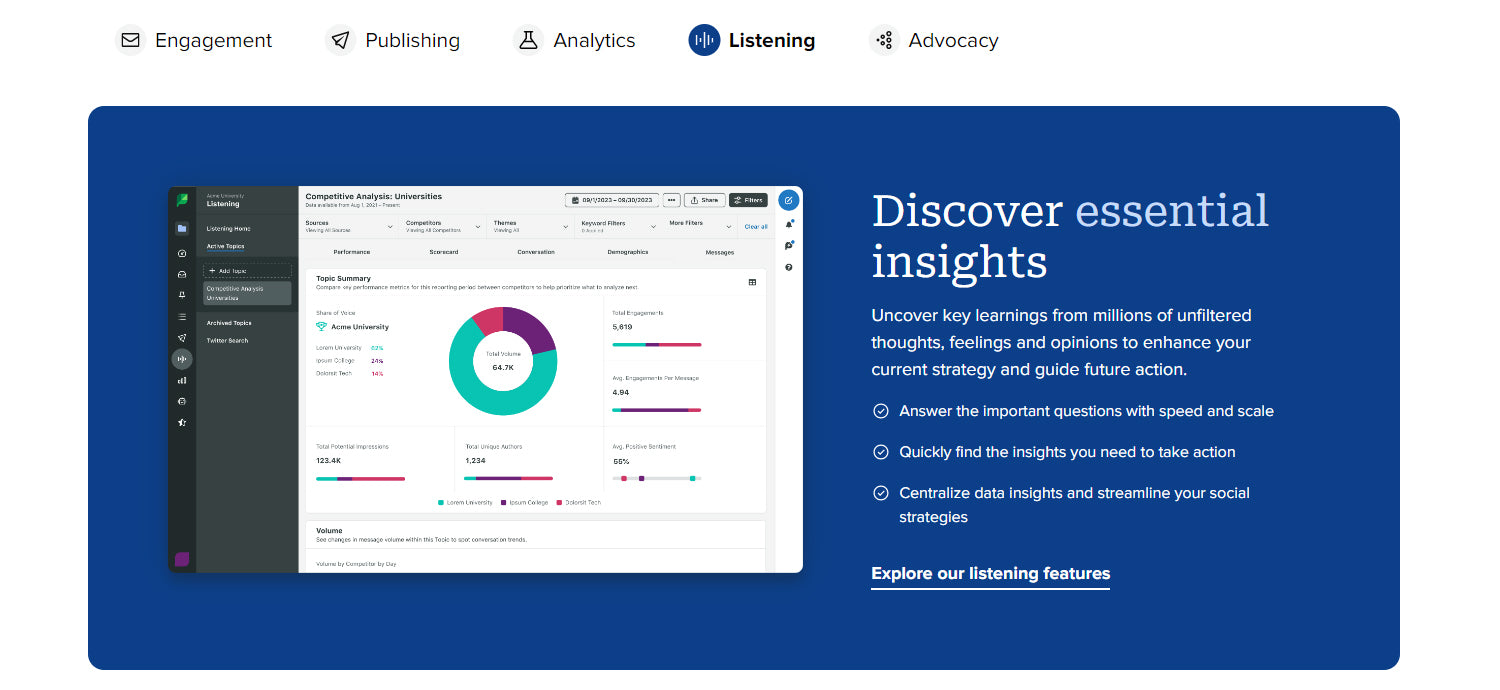
Surfer SEO
Surfer SEO is a cloud-based SEO tool that helps website owners audit their content, analyse their competition, and optimise their pages to improve visibility and rank higher in search engine results pages (SERPs) so they can drive organic traffic to their sites. Surfer SEO provides an advanced keyword research tool that helps users discover high-potential keywords, plan their content strategy, and generate outlines/briefs for posts. It also offers a convenient Chrome extension.
Whether you’re an SEO specialist, business owner, or marketer, you can use Surfer SEO to create keyword-optimised content, improve search engine rankings, conduct keyword research, and establish topical authority.

Key features of Surfer SEO:
-
Keyword research: Create SEO-ready content strategy and discover hundreds of new topic ideas in minutes. Conducting keyword research on Surfer SEO is easy.
-
Content editor: Surfer SEO provides guidelines and content suggestions that you can use to create an outline, write, and optimise your website pages and posts.
-
Audit: With Surfer SEO audit, you can optimise your existing articles and dominate your niche. Surfer SEO will run an in-depth analysis to identify opportunities to improve its search performance and present them in an easy-to-understand report.
-
Surfer AI: Using Surfer AI, you can create SEO-optimised articles that rank with just a click.
-
Keyword Surfer: Surfer SEO also offers a free Google Chrome extension that anyone can use even if you haven’t purchased a paid version.
-
SERP analyser: SERP analyser is one of Surfer’s standout features. It provides a detailed breakdown of SERPs for a given keyword, so you know what you aim for.
-
Domain planner: Domain planner is another useful tool for analysing existing content on your website. It’s similar to the audit tool but analyses your entire domain to identify missed SEO opportunities.
Pros of Surfer SEO:
-
Offers completely free Keyword Surfer Chrome extension
-
Offers a wide range of features
-
Time-saving AI tools
-
Provides data-driven insights for keyword research and content suggestions
-
Integration with WordPress and Google Docs
-
Seamless API and integration capabilities
Cons of Surfer SEO:
-
No free trial. Offers a 7-day money-back guarantee
-
Steep pricing
-
Limited integrations

Semrush
Semrush is one of the most popular SEO tools that businesses rely on to make their website SEO-friendly. It's ideal for anyone who needs a complete SEO toolkit and other tools for market research. Semrush helps you optimise your website for search engines. With Semrush, users can find out what people are searching for on Google, identify best-selling products, create new web content that may attract traffic, identify link-building opportunities, and tweak technical aspects of their site to achieve higher search rankings. Semrush doesn't offer a free plan.

Key features of Semrush:
-
Keyword research: Semrush offers some of the best keyword research tools. These tools are specifically designed to help boost website traffic and rank well on SERPs.
-
Website competitive analysis: Conduct in-depth competitive analysis with Semrush tools. They can help with competitor research and analysis. These tools uncover every aspect of your competitors’ online presence.
-
SEO competitive analysis: With Semrush, you can check SEO competition in minutes. It provides several SEO competition analysis tools. Additionally, you can build beautiful PDF reports easily and quickly with its drag-and-drop widgets and other formatting features.
-
Market analysis: Semrush provides market research, traffic analysis, and other helpful tool packages that can help you gain a solid understanding of your current or new market. You can discover the market size and potential, the key players, the best-sellers, their online market share, and traffic generation strategies and also conduct a comparative analysis of your competitors’ online performance and trends.
-
Backlink analysis: Semrush offers several backlink analysis tools. These tools help analyse backlinks, find new link-building opportunities, manage your outreach campaigns and get actionable insights to improve your website’s performance.
-
Site audit: You can use Semrush’s Site audit tool to crawl through all the pages on your site and identify issues that impact your search rankings, such as keyword stuffing, duplicate content, missing headers and slow loading times. It provides actionable insights to fix the website’s issues.
-
On-page SEO checker: Semrush’s on-page SEO checker is a more focused auditing tool that helps improve the ranks of specific website pages with an exhaustive list of ideas. It also provides tips on link building, content writing, SERP feature targeting, and more.
Pros of Semrush:
-
Largest keyword database
-
Multiple tools and features
-
Provides metrics to evaluate keyword and backlink opportunities
-
Offers value for money
-
Comes with powerful link-building features
-
Provides generous usage allowances
Cons of Semrush:
-
Traffic analytics data is a rough estimate
-
Provides data only for Google
-
Paid plans are expensive
-
Not the most user-friendly
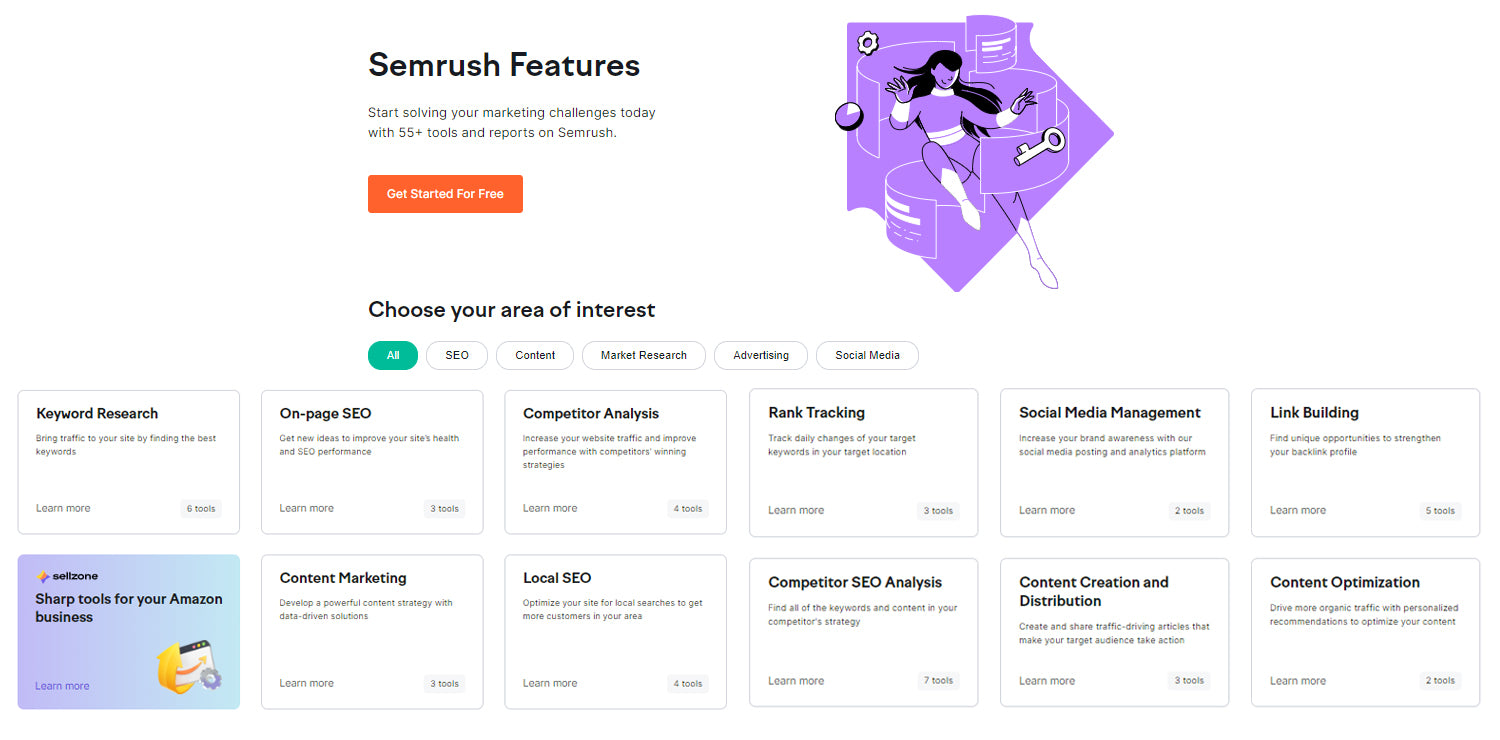
Owletter
Owletter is another competitor analysis tool that enables you to analyse your competition’s emails. It automatically captures all emails sent from your competitors’ websites to their mailing lists, takes a screenshot, stores and analyses the emails, and alerts you about the emails that may be important to your business. You’ll learn loads about your competitors’ email behaviour, which you can use to develop your email marketing strategy. Retailers can get a competitive advantage by monitoring their competitors in one place and learning what they do well and their failures.
Using Owletter gives you valuable insights, including whether your competitors have a spam reputation, follow a schedule for sending emails, and change their email schedules according to the season. You also get information about trending topics and potential and undiscovered opportunities to outperform your competitors.

Key features of Owletter:
-
Email marketing monitoring: Owletter takes the pain out of monitoring your competitors’ emails. It can effectively monitor all the emails sent from your competitors’ websites to their mailing lists.
-
Comprehensive analysis of competitors’ emails: Owletter uncovers crucial insights by carefully analysing your competitors’ email marketing campaigns. It presents critical data in a sophisticated and readable manner and email summary round-ups.
-
Stores and keeps research data organised: Owletter captures and stores all the crucial information from your competitors’ emails sent from any given server in a handy and properly curated collection.
-
Seasonality and trends analytics: Get updates about the latest trends and seasonality to help you keep up with email topics that matter most to your business. Know what topics your competitors are building content around and maximise your email campaign storytelling.
Pros of Owletter:
-
Offers in-depth analysis of your competitors’ email marketing strategies
-
Keep your inbox clear by storing all the research data in a handy and curated collection
-
Purpose-specific tool
Cons of Owletter:
-
Limited features
Summary
While the terms ‘competition’ and ‘competitors’ may have a negative connotation, it’s quite essential for your business. It indicates a market demand for your products and a pool of eager customers willing to purchase. In the words of Henry Ford, “Competition whose motive is merely to compete, to drive some other fellow out, never carries very far. The competitor to be feared is one who never bothers about you but makes his own business better all the time.” So, whether you’re just starting a new venture or have an already established business, you should consider performing competitor analysis on a quarterly basis. Why? Because understanding your competitors is paramount - they might be the deciding factor for potential customers. In the competitive landscape of ecommerce, seizing every opportunity to stand out from your competitors is a strategy any business would want to pursue.



